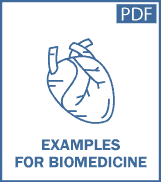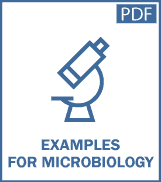Answering short-answer questions
Analysing the question
Short-answer questions provide an opportunity for you to show that you have an understanding of the concepts in a subject. You should be able to remember a range of definitions and facts as well as explain/analyse more complex concepts and solve problems.
The amount of detail that you provide in your answer will depend on what you have been taught during your course. The number of marks assigned to the question is another indicator of how much detail is expected.
Before you begin to answer a question, it is best to analyse the question first so you are clear about exactly is being asked.
Follow this 5-step process for SAQs.
- Deconstruct the question.
- Identify content words.
- Identify task words.
- Write your answer.
- Check you’ve answered all parts of the question.
1. Deconstruct the question
Many short-answer questions will already be divided into parts (I.e. a, b, c) but it can be helpful to deconstruct the question further to ensure you answer all parts of the question. You can number each part or re-write in your own words.
For calculations: Questions in some fields (e.g. physics and chemistry) may have problem-solving questions that require you to perform a calculation. Your first step should be to extract all the values from the question that you will need to solve the question. It can be useful to draw a diagram and label it with the values from the question.
Example
Q. Identify an organ that removes alcohol from the bloodstream and describe the process involved.
You could divide this question into 2 parts: the first part is the name of the organ and the second part provides the description.
- Name of organ
- Description of process
2. Identify content words
The content words of a question indicate what information should be included in your answer.It is useful to underline each of the content words so you can quickly confirm you have referred to all the necessary information in your answer.
For calculations:
Identify the equations you will need to solve the problem and copy them from your formula sheet (if applicable). Sometimes you will need to convert the values you’ve been given to the correct units or use several different equations before you can find the final answer.
Example
Q. Identify an organ that removes alcohol from the bloodstream and describe the process involved.
3. Identify task words
Task words tell you how you need to present your answer and how much information you should include. Circle or highlight each of the task words in the question and use these to construct your answer.
You should have a good understanding of the variety of task words used in short-answer questions.
Example
Q. Identify an organ that removes alcohol from the bloodstream and describe the process involved.
4. Write your answer
Once you have deconstructed the question and identified the content and task words, you can begin to answer the question.When writing your answer, whether it requires dot points, sentences, or calculations, you should present you answer in a neat and logical manner.
Make it easy for your lecturer to follow!
You should provide as much information as you think the question requires, but try to keep it concise. The task words will give you an indication of what is required.
Remember, SAQs are your opportunity to show your lecturer what you know and understand. Don’t be afraid to include specific terms or draw diagrams if it helps you to answer the question.
For calculations:
Make it clear to your lecturer what you are doing. Use words to label and link different parts of your calculation. Ensure that you use the correct units and have used the correct number of significant figures.
Example
- The liver.
- An enzyme in the liver, alcohol dehydrogenase converts ethanol to acetaldehyde. Acetaldehyde is then converted to acetic acid by another enzyme, aldehyde dehydrogenase. Acetic acid is used in a range of metabolic pathways and can be broken down into water and carbon dioxide.
OR
The liver is responsible for removing the majority of alcohol from the bloodstream using two enzymes: alcohol dehydrogenase and aldehyde dehydrogenase.

5. Check your answer
It is very important to check your answer once you have finished writing it. Compare your answer with the question and the content and task words you identified at the beginning.
Have you answered the question?
















